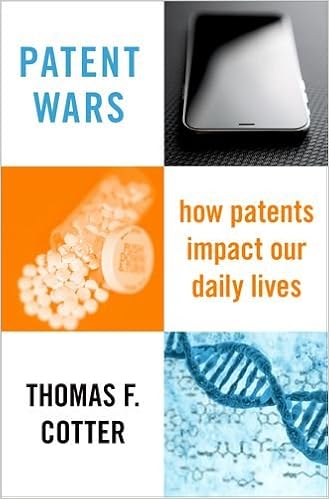Today I am pleased to publish a guest post by Jill Ge of Clifford Chance, on bifurcation and damages in China.
* * *
Patent
litigation is bifurcated in China, with infringement suits heard by infringement
courts and patent validity decided by the Patent Re-examination Board (PRB). It is usual for the PRB proceedings to run
their course more quickly than the concurrent infringement case. This has prompted some judges to wait for the
outcome of the validity proceedings and then dismiss the infringement claims at
a comparatively early stage where the PRB has declared the patent invalid. The practice has been given further judicial encouragement
following an interpretation issued by the Chinese Supreme Court in 2016, which formally
allows courts to dismiss an infringement claim following a PRB invalidation decision.
Article
2 of the 2016 Judicial Interpretation II for the Adjudication of Patent
Infringement Disputes (JI) says the following: "Where the rights
asserted by a patentee in a patent infringement suit are declared invalid by
the Patent Re-examination Board, the people's court adjudicating the
infringement case concerning the invalidated patent may render a ruling to
dismiss the infringement proceedings filed by the patentee." The rule is meant to alleviate the backlog of
cases in the infringement courts.
In
practice, the courts will either dismiss the infringement suit or request the
patentee to withdraw the suit. As a
result, a patentee facing an adverse PRB decision first needs to have the PRB
decision reversed by going through the administrative appeals procedure. It
is only if the patentee is successful in overturning the PRB decision, that the
patentee can then re-file the infringement suit. In the interim, the patentee
will be unable to take advantage of any measures restraining the defendant's
acts.
According
to recent statistics published by the Beijing IP Court, the pattern of
dismissal and/or withdrawal occurs in more than three-quarters of first-instance
patent infringement cases. Of the 668
infringement cases heard by the Beijing IP Court from November 6, 2014 to June
30, 2017, 522 cases were either dismissed or withdrawn, with decisions being issued
in only 142 cases. The four remaining
cases were settled.
Interestingly,
the patentee had a high success rate of 82% in the cases decided by the Beijing
IP Court, winning 116 of the 142 cases.
Article
2 of the JI contemplates that a patentee may refile an infringement suit. However, it is unclear whether, and to what
extent, the patentee may claim damages if successful. If infringement is found, is a patentee
entitled to damages for loss incurred from the earliest date of the
infringement?
The
answer seems to be "no", at least according to the recent case of Brother Industries, Ltd v. Ningbo Shupu Electromechanical
Co., Ltd. Brother holds a patent relating to sewing machine
technology and twice sued Ningbo for patent infringement, first in 2010 and
then again in 2016. The timeline of the
case is as follows:
· Brother filed the first suit against Ningbo in the Suzhou Intermediate Court in October 2010.
· The PRB invalidated Brother's patent in May 2013 and the Suzhou court subsequently dismissed the infringement suit in August 2013.
· Brother appealed the PRB decision and the Beijing No. 1 Intermediate Court found in its favor. The Beijing High Court subsequently upheld the ruling in December 15, 2014, ordering the PRB to reconsider its decision. *On October 21, 2015, the PRB finally upheld the validity of the patent.
· Brother filed the infringement suit against Ningbo in the Shanghai IP Court in July 2016, claiming damages of RMB 34 million (approximately US$ 5.35 million).
· The parties exchanged evidence in January 2017 and the trial took place in April 2017.
The
accused sewing machines in the two suits were of the same models. While the Shanghai IP Court found that
Brother's patent had been infringed, it did not accept the plaintiff's damages
estimate of Ningbo's illegal gains for the entire period from October 2010 to
February 2017. According to the court,
Brother's estimate may not have reflected the actual sales of the infringing models. This seems a departure from the Beijing
court's recent practice where the burden shifts to the defendant to refute the
plaintiff's damages estimate, see previous post.
Instead,
the court focused its damages analysis mainly on the period from April 2015 to
February 2017, for which the court had used its investigational power to obtain
the relevant sales data from the local tax bureau. The tax records show that Ningbo derived RMB 44,333,005
from selling the infringing models during this period. Based on this, the court, in its discretion,
ordered Ningbo to pay Brother damages of RMB 5 million (approximately US$ 800,000). It is unclear from the decision whether any
tax records were obtained in respect of the defendant's infringing sale prior
to April 2015.
The
RMB 5 million award is substantial by Chinese standards. The Brother
case has been published as an exemplary case of enhancing patent
protection, given that the maximum amount of statutory damages is RMB 1
million. It does however raise a
question as to whether patentees are at risk of losing out under a regime where
patent validity has to be litigated first, and where they are likely to be left
without redress in respect of ongoing infringements when the validity
proceeding is pending and on appeal.

